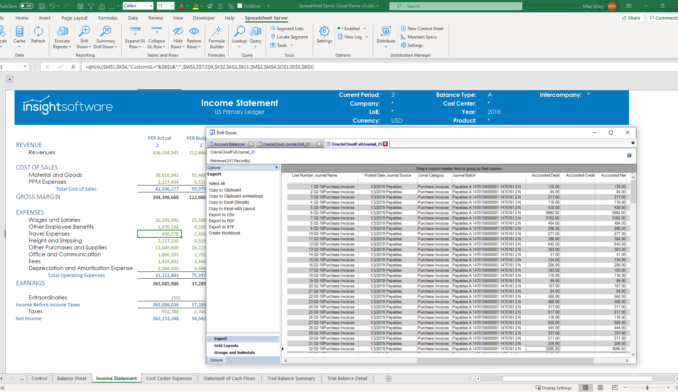5 Tips for Seamless Data Migration
Implementing an ERP is an initiative that requires a significant amount of planning, time, and capital. So after implementation, migrating to another can seem inconceivable. But often as an organization grows, the business begins requiring additional enhancements and capabilities. This could be due to an acquisition by another company and migration of data over to their system—or purchasing a company and needing to move their data over to your system! There are many reasons that require a transition to a new ERP system, but no matter the reason for the move, the key to a successful transition is accurate data migration.
Business initiatives depend on uninterrupted information that is accurate, complete, and timely. Even while you’re in the process of a migration, business keeps moving, and you need to have constant access to the right data before, during, and after the transition. So how do you achieve that seamlessly with maximum data accuracy and minimal headaches?
1. Plan, plan, and plan some more. It is not feasible to change ERPs on a regular basis. That means that when a company does move to a new ERP, they don’t always have a clear enough picture of what is required with a migration. Make sure you take the time to map out a clear strategy of what information is going where at what time.
2. Know what really needs to be moved on, and what needs to be moved out. This is an excellent opportunity to “clean house” and ensure that only the best and most accurate data gets moved over to the new system. Rid yourself of duplicate records, and put good data into consistent places. Obsolete data can also be left behind during the migration; be sure to check legal requirements on any retention timelines and restrictions before deleting any data.
3. Make sure everyone on your team has a clear understanding of which data needs to migrate. Basic data such as customers, vendors, current transactions, and financial histories are no-brainers. But you also need to keep an eye on subsidiary data such as serial numbers, lots, and quantities to ensure they make the move.
4. Have a clear move timeline. Certain data, such as customers and products, should be migrated ahead of your go-live date. But historical data like sales history isn’t quite as immediate. This data could wait until almost any time after your new system is up and running. Creating a clear—and realistic—move timeline will also help you keep tabs on the scale and cost of the data migration project. If you underestimate the scope, you’ll likely end up with overruns on time and money at best; at worst, a complete migration failure.
5. Test and verify again and again and again. The clearest sign of a successful migration will be an equally successful test of the data from the new system. It’s best to run this on a test database and not the live system, just in case. You’ll also want to test at various intersections of the migration process to ensure that issues are corrected as you go, and not left to pile up and sort through after the migration is complete.
Data migration is a big undertaking if you want to do it well and ensure accuracy. The good news is that you’re not alone. Spreadsheet Server and Atlas are right there by your side.
If you’re already using Spreadsheet Server or Atlas with your current ERP, you know all about their data validation capabilities. But did you know that those same data validation capabilities can help verify your data as it moves from one ERP to the next? Easily clean out duplicate or incorrect data by filtering it through Spreadsheet Server or Atlas. These platforms can also quickly cross-reference your data to fit the new ERP’s upload requirements, putting all the right information in the right place and eliminating the need for your team to spend hours manually manipulating the data, which increases the opportunity for error.
Spreadsheet Server also supports more than 130 ERP systems and Atlas supports Microsoft Dynamics AX and Microsoft Dynamics 365 for Finance and Operations, so you don’t have to worry about leaving either one behind in your migration. That also means that just as Spreadsheet Server or Atlas validated your data as it came from one ERP, they can also validate the data as it goes into the new system.
If you’re not using Spreadsheet Server or Atlas yet, then it might be time to consider adding one of these platforms to your team. Let us show you around!







